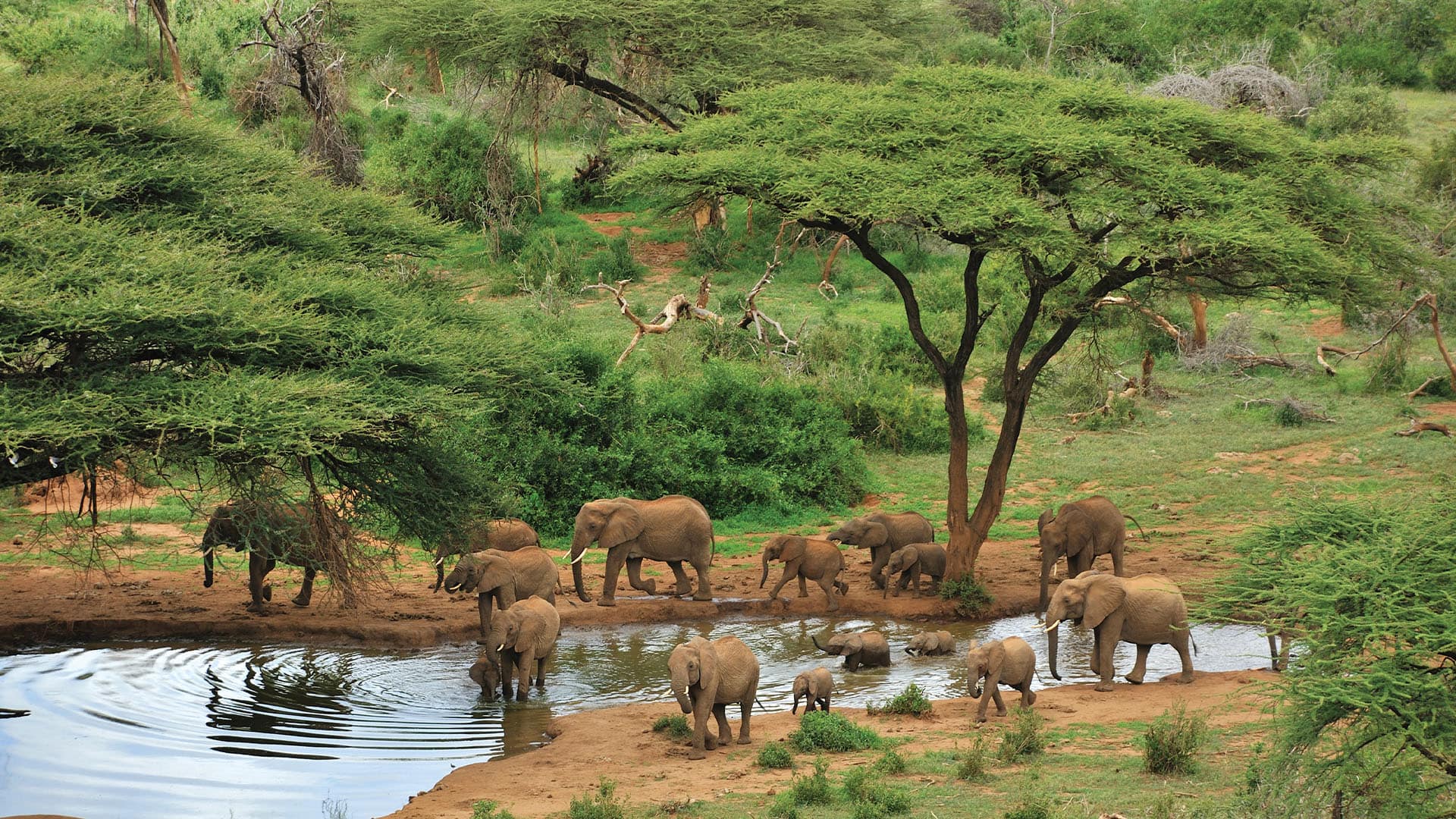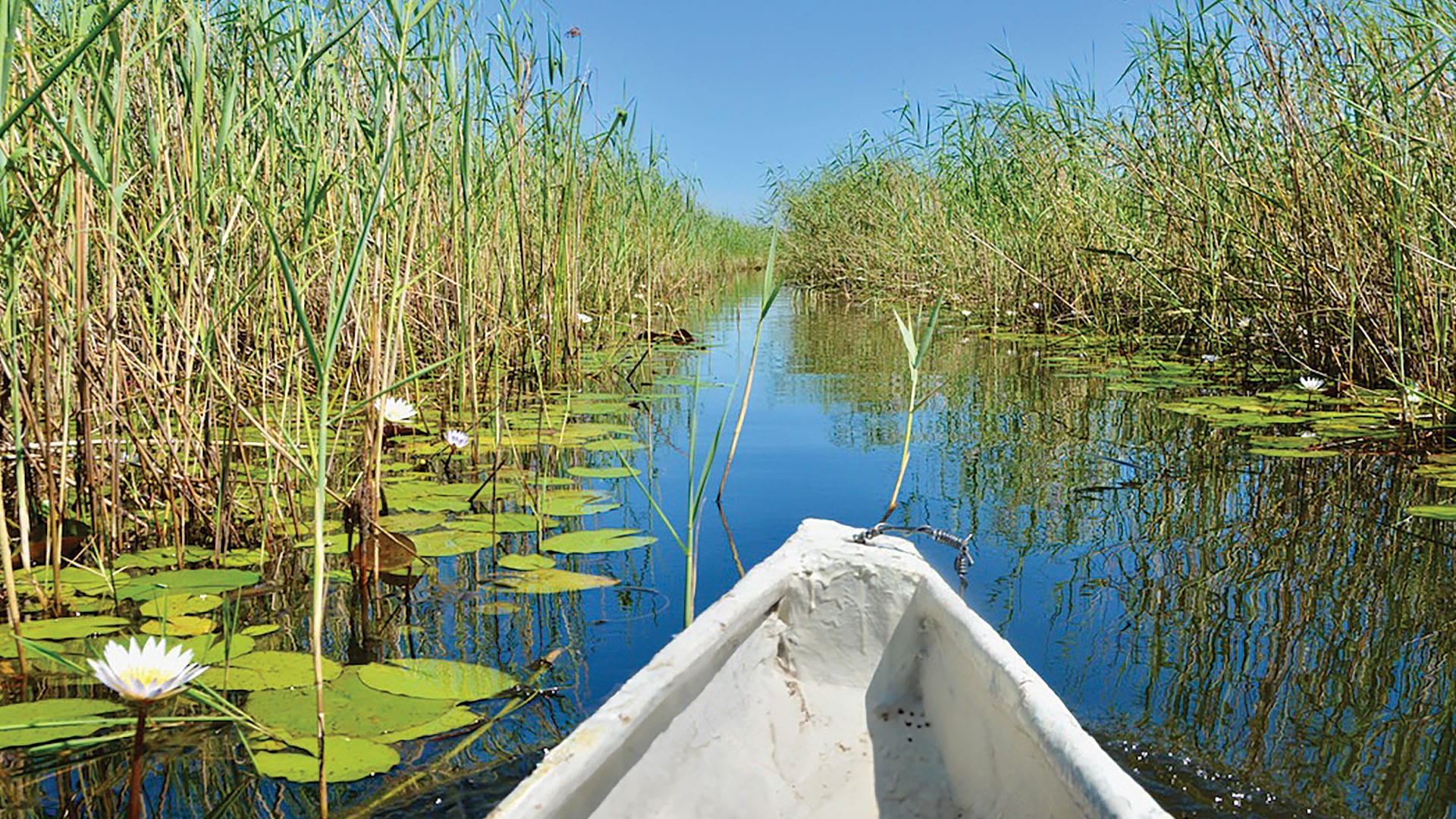My earliest memory of going on safari was when I was a little girl, no more than eight years old. I was born and raised in South Africa, so my family were no strangers to safari. But it was new to me at the time, and I’ll never forget the thrill of seeing life in the bush play out before my very eyes.
My family and I were in Kruger National Park—spending time in South Africa’s most famous game park in the country’s northeast is a favourite pastime for South Africans of all stripes. As the day progressed, we came across a cheetah stealthily walking along the side of the road. The cheetah’s every step was silent, its paws carefully moving forward in the bush alongside the road. I looked to see where the cheetah was headed and spotted a small herd of impala grazing absentmindedly in some tall grass. They didn’t realize the danger, until they did. The silent cheetah exploded out of the bush and the herd scattered. One unlucky impala fell to the teeth and claws of the cheetah. It was too fast, the course of nature too inevitable. Not every first memory on safari is a matter of life and death like mine was, but that first encounter with the realities and magnificence of the wild sears itself into your mind.
Animals are always living out the great cycle of life and death all around us, but usually they’re just outside of view. There’s too much that obscures them: chores, bills, day jobs, mundane worries, emotional matters big and small. We don’t usually have the chance to pay attention to the great wild that coexists alongside us, but safaris strip all the stuff of urban life out of the way. They force us to see the wild up close and realize our own place within the grand ecosystem of life. An African safari lets you escape and disconnect from the everyday, and in doing so connect with the wild earth.
Safaris also help you connect to communities that live at a different rhythm than most of us do. They also contribute to local communities and provide insights into diverse African cultures and traditions. Perhaps most importantly, they contribute to conservation and environmental protection. Most people love lions, elephants, and giraffes, but as abstractions more than real beings sharing the world with us. But when you see these animals up close, the stakes of losing them become tangible. You realize you must do something to protect them for future generations. Seemingly inconsequential things like park fees become important means of supporting and protecting wildlife in nature reserves and national parks.
If you’ve never been on a safari before, I envy you. There’s nothing like the first time you head into the bush on your first game drive and enjoy that glimpse of a lion’s mane in the tall grass or the ears of a hippo peeking above the surface of the watering hole.
There are a few essentials to keep in mind before you go. First, choose the right time to travel. If you’re a keen birder or want to see the Great Migration in the Masai Mara and Serengeti, seasonal migration patterns will determine when to visit. Second, realize that Africa is not homogenous. It’s startlingly diverse so think about what you want to do on safari and then determine the right place to do it. It’s essential to rely on the expertise of your Destination Specialist, who has gone on safari before and planned countless more for other travellers.
Finally, realize that African safaris are transformative experiences. They offer a chance to reconnect with nature, witness the circle of life, and experience the primal beauty of our planet. And they give us tangible opportunities to support local communities and connect our unforgettable travel memories to the preservation of our most precious creatures. In essence, safaris are natural experiences, but they also take on spiritual dimensions. They change you for the better. The hope is that they help you change the world for the better too.
Our Unforgettable First Safaris
You never forget your first. Our team certainly hasn’t. Let these safari memories from Goway team members inspire you to follow in their footsteps and enjoy the timeless appeal of an African safari.
Incredible Wildlife Diversity in the Land of a Thousand Hills

Mitchell Fawcett, VP Marketing at Goway
Rwanda is widely regarded as an ideal gateway into Africa for first-timers, and I certainly see why. It’s clean, safe, easy to navigate, and even required fewer vaccines than many other countries on the continent. The warm and effusively welcoming spirit of the locals instantly put me at ease.
I was struck by the extensive biodiversity of the small country. It’s less than a day’s drive from the west’s soaring mountains, through the central rolling hills, and into the arid plains of Akagera National Park in the east. The lush mountain forests are most famous for the endangered mountain gorilla, but they also house 12 other primate species. As we trekked through Nyungwe National Park’s trails and rope bridges, there was a constant symphony of monkeys and birds in the treetops that felt reminiscent of the Costa Rican jungles I know and love.
Just 155 mi (250 km) to the east was a striking transition into the landscapes I’d been yearning to see since watching The Lion King for the first time—acacia trees, red clay soil, and pale dancing grasses flanked by mirror-like lakes. We arrived just in time for a sunset cruise on Lake Ihema, dotted with hippopotamus ears. Just 15 minutes in we were stunned to cruise past a duo of bathing elephants. Two days of game drives followed where we easily crossed off the Big Five, and many more. Seeing such an array of wildlife in their pristine, natural habitats was moving beyond words. Africa, I’ll be back.
Face-to-Face with Giants in Hwange National Park

Kelley Cleaveland, Destination Specialist
Zimbabwe is most famous for Victoria Falls, but Hwange National Park is an exceptional safari game park. I had been to neighbouring Zambia before and seen Victoria Falls, which sits on the border between the two nations, so I had a sense of the country’s geography and attractions, but I was amazed by the size and diversity of the park.
Hwange lies on the edge of the Kalahari Desert and the landscape of the park rapidly transforms from dry riverbeds and mudflats to swamps and lush forests. We visited in the green season in May when the humidity and rain led to trees bursting and soils rich with nutrients and moisture. The whole country was flush with life and we saw so many animals every day. Zimbabwean safari guides go through rigorous training, safety, and aptitude tests, which meant we could go on walking safaris. We easily spotted most of the Big Five (rhinos hadn’t been introduced into Hwange yet when I visited).
But it’s the elephants that are most notable in Hwange. Hwange has the largest population of elephants in the world after Chobe in Botswana, so we saw them in great numbers throughout the park. At one point on a walking safari, we encountered a great group of elephants drinking from a waterhole. We watched them and they watched us, each group wondering whether it was necessary to worry about the other. It was a remarkable encounter that put us face-to-face with magnificent giants and let us witness what remarkable minds they have. If you have the chance to visit Zimbabwe, don’t pass it up.
Iconic Sunsets & the Big Five in Sabi Sands

Laura Vagners, Destination Specialist
I went on my first safari to Sabi Sands, a private game reserve on the edge of Kruger National Park. The area is renowned for the high density of wildlife. After our first afternoon when we saw all the Big Five, I realized just what they meant by density. I didn’t think it could get any better, but every day outdid the last.
Our first game drive was thrilling. I had no idea what was around the corner when driving through the unspoiled bush. The first sight of a lioness and her cubs and a herd of elephants took my breath away. I had to put my camera down and just soak in the immersive experience. We split our time between game drives and walking safaris, which let you experience the land intimately. Every plant, footprint, and smell told a different story about the ecosystem and the interconnectedness of life. We typically ended each day with sundowners: an ice-cold local drink, some snacks, and the incomparable colours of the African sunset.
I will always remember the passion of the staff, guides, and trackers. They were committed to providing the best experience and sharing their knowledge and passion with us. The guide’s stories highlighted how every antelope and bird was remarkable in its own way and critical to ensuring the stability of the larger ecosystem. I left a little piece of myself in this land, and 10 years later, the experiences remain clear as day in my mind.
Mokoro Rides in the Okavango Delta

Meg Smith, Reservations Supervisor
Botswana is renowned for its elephant population. There is even a road leading to the Zimbabwean border nicknamed the Elephant Highway and the area lives up to its name, with elephants everywhere. But the safari experience does not end with elephants in Botswana. This is a nation with a shifting landscape, from the dry deserts and salt pans of the Makgadikgadi Salt Pans in the south to the lush wetlands of the Okavango Delta to the riverside parks of Chobe in the north.
In the Okavango, we would ride in a mokoro (traditional dugout canoe) and glide through the waters, spotting wildlife on our left and right. The wetlands are bursting with birdlife: Botswana’s national bird, the lilac-breasted rollers with their plumes of pink, blue, and orange; the long legs and necks of kori bustards, the largest flying bird native to Africa, and countless other migratory birds. This is a birder’s paradise! In the Okavango, we also went on walking safaris and at one point saw a large bull elephant. It’s a different experience seeing them outside of the vehicle. It gives you a true sense of how large they are and makes you feel so much more a part of the environment.
The diversity of Botswana’s landscape also makes it possible to spot rare wildlife. On a sunset game drive in the Makgadikgadi Salt Pans, after searching for flamingoes on a soda lake and enjoying sundowners, we were leaving the park and an aardwolf darted in front of our vehicle. These animals are remarkably rare. This moment remains the only time I’ve seen one in the wild, despite many more game drives across Africa in the years since. It shows just how special Botswana is and how magical a first safari can be.
This article was originally published in No. 33 of Globetrotting Magazine.
Related Articles:
South African-born Moira has lived in San Francisco and Toronto, but her travel map includes over 50 countries. Her heart still swings toward all things African, particularly Zambia’s Lower Zambezi National Park, the Grumeti Reserves in Tanzania, and Botswana’s Okavango Delta. Her most treasured attributes are a great sense of adventure and a lousy sense of direction, which have combined to lead her to some wonderful travel memories and local people.
Get Inspired
Inspire your wanderlust with our globetrotting tales.
Unlock more by subscribing to our newsletter
With our newsletter, you’ll get access to regular communications that inspire you and help you explore the world your way

